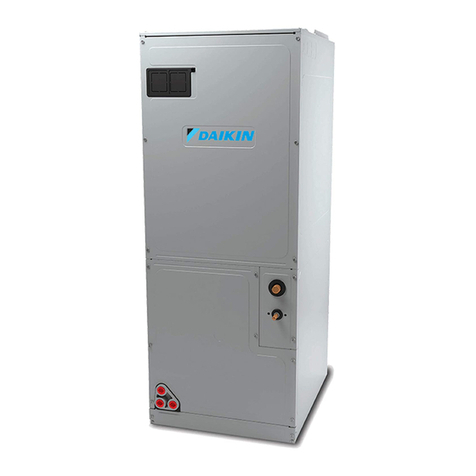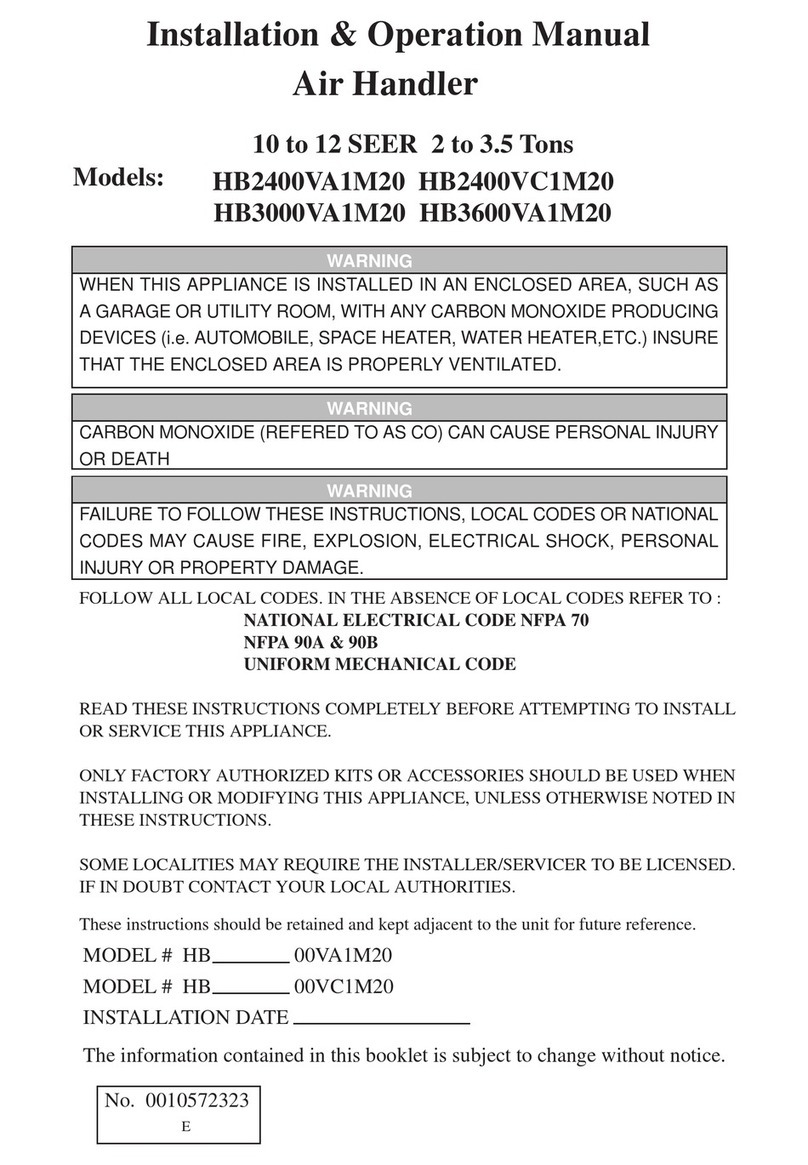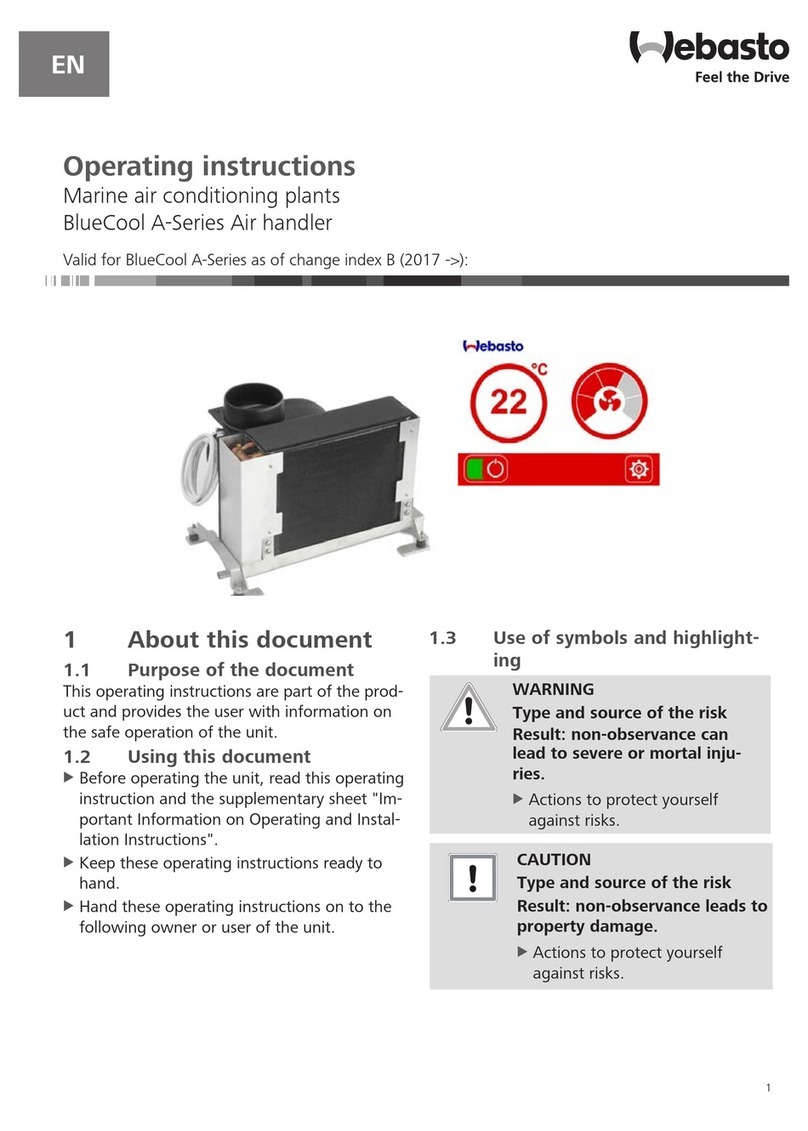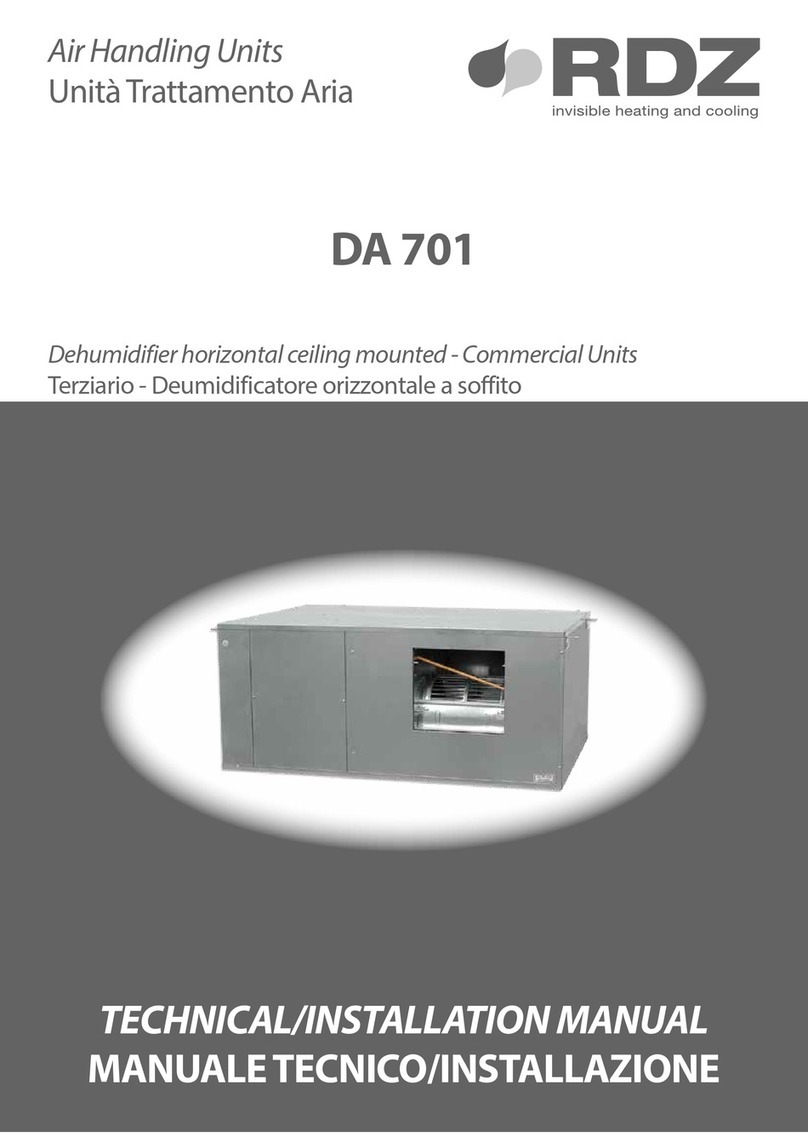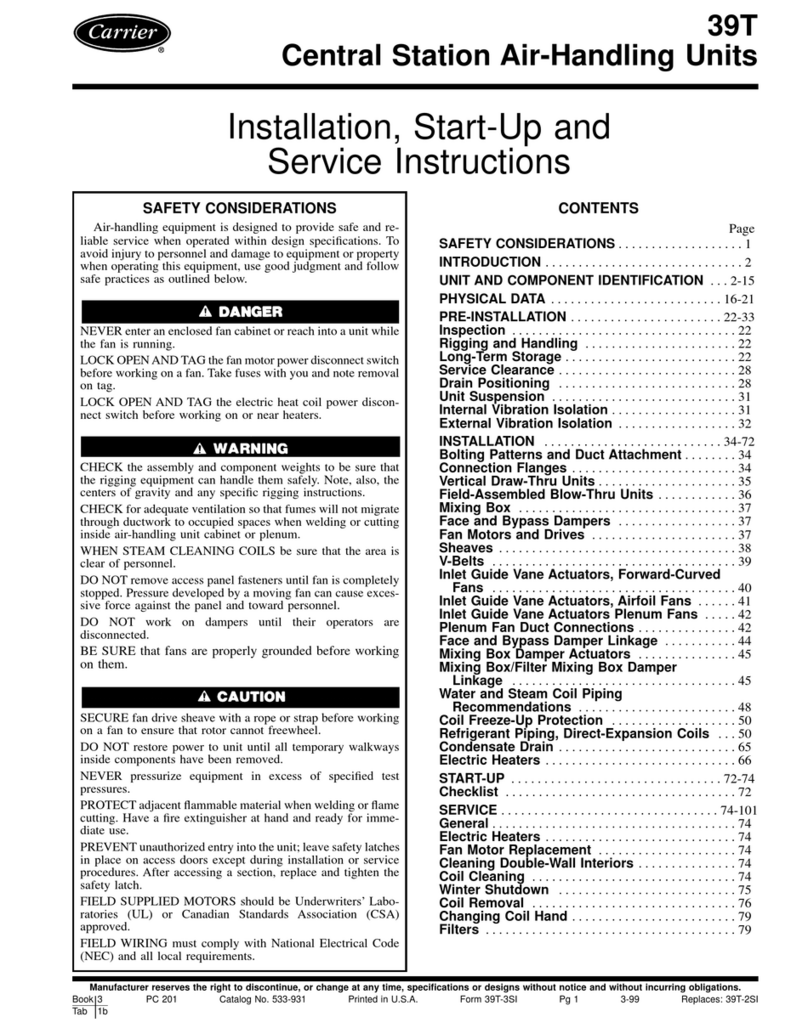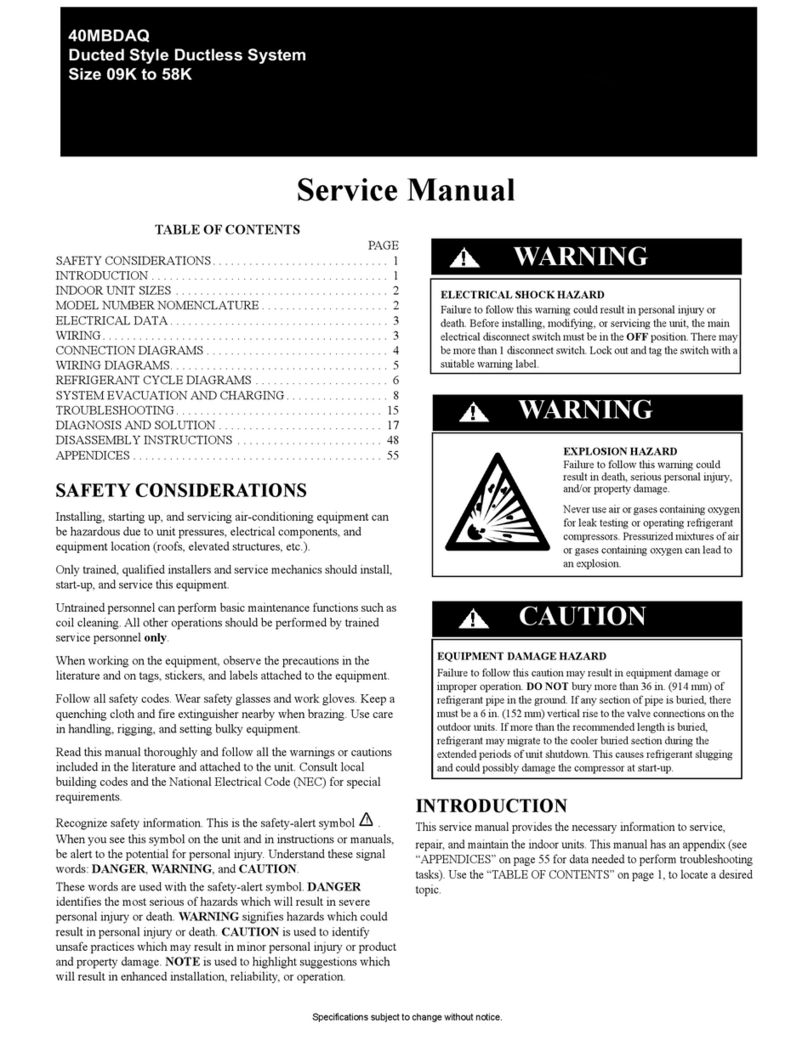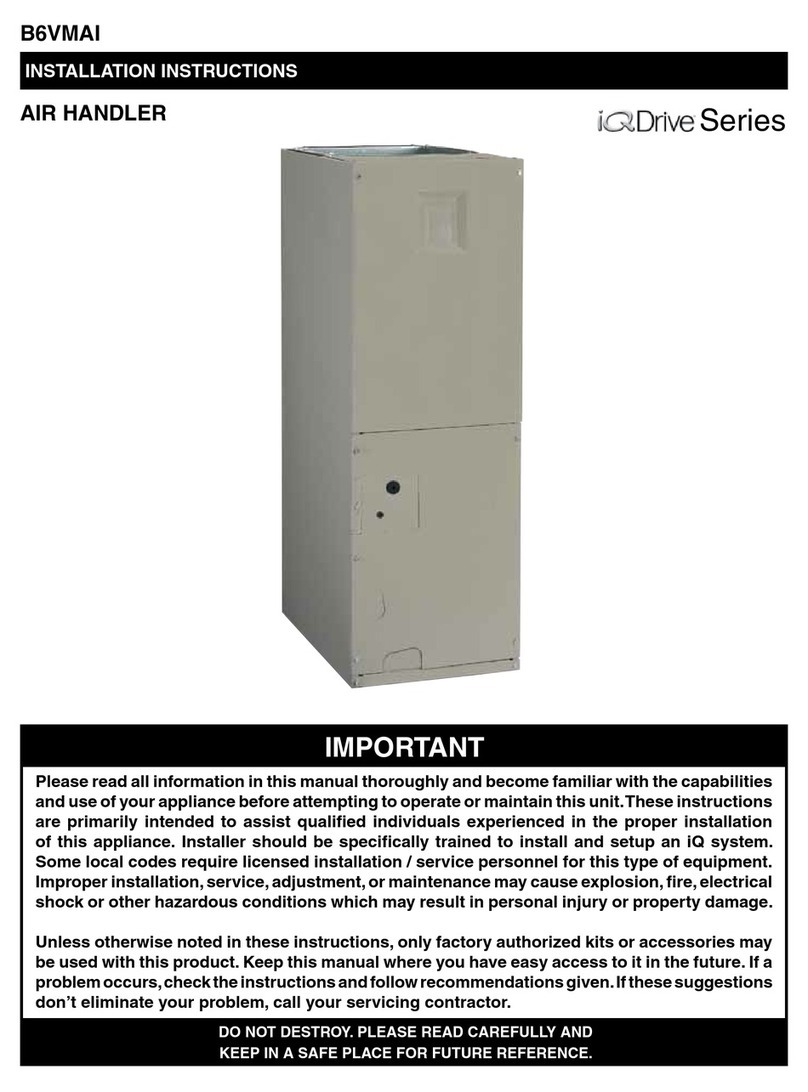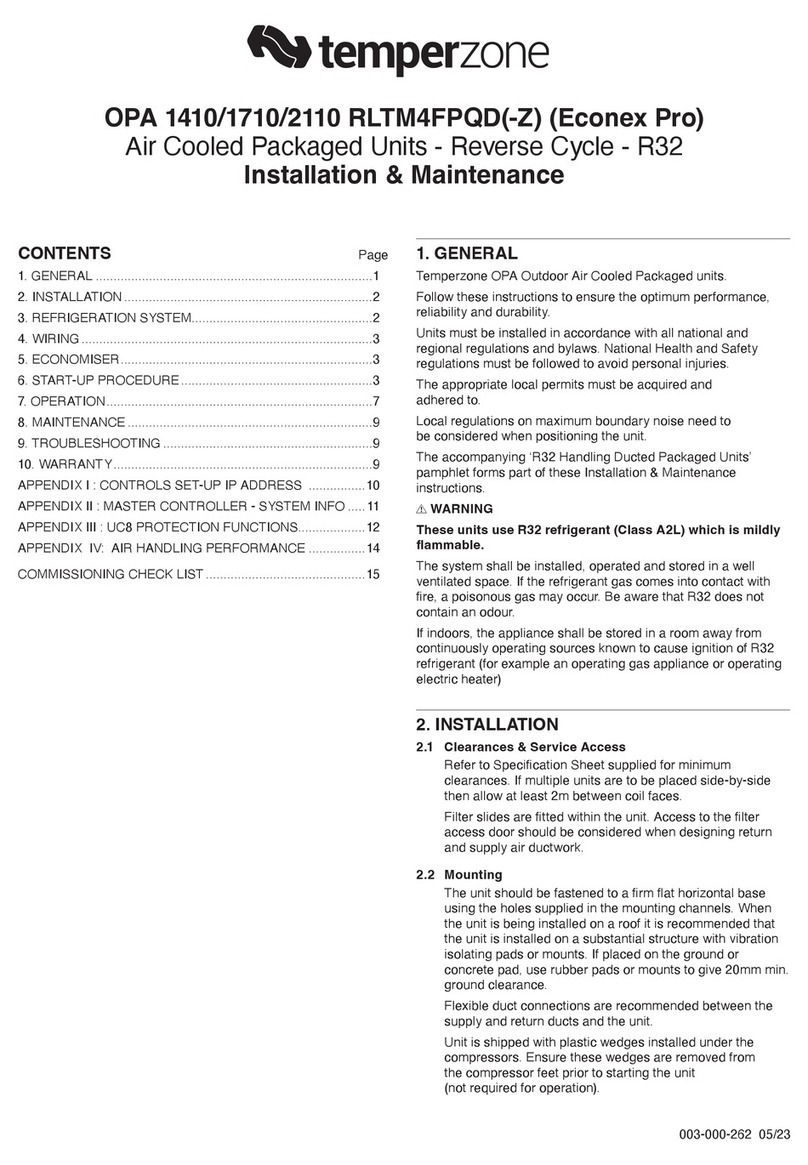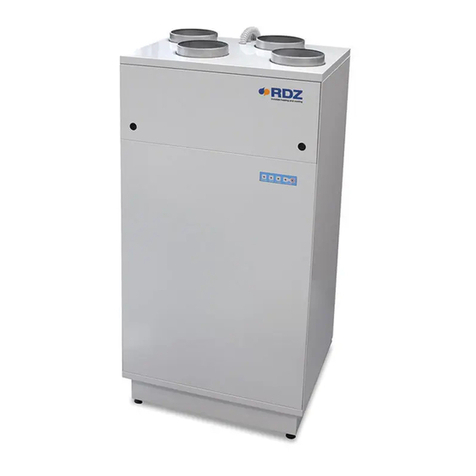
-
1
-
'21 • AHU-T-393
CONTENTS
1. AHU-KIT-SP - Overall composition....................................................................4
1.1 Product description.......................................................................................4
(1) What is Air Handling Unit?..........................................................................4
(2) What is AHU-KIT-SP? ................................................................................5
(3) Systems based on AHU Interface...............................................................6
(a) Single refrigerant line system................................................................6
(b) Multiple refrigerant line system .............................................................7
(c) AHU Interface input/output/in-output circuit .........................................8
(4) AHU Interface check sheet.........................................................................8
(5) Range of use..............................................................................................8
1.2 How to use .....................................................................................................9
1.2.1 AIR HANDLING UNIT INTERFACE check sheet .........................................9
(1) Confirmation of design conditions (Air capacity,
suction air temperature/humidity, target temperature/humidity).................10
(a) Design air condition............................................................................10
(b) Air capacity condition.........................................................................10
(c) Total heat exchanger ..........................................................................10
(d) Humidifier, Heater...............................................................................10
(e) Design requirement capacity condition...............................................10
(f) Piping length ......................................................................................10
(g) Height difference between in-/outdoor units .......................................10
(2) Confirmation of heat exchanger specifications..........................................11
(a) Heat exchanger calculating conditions ...............................................11
(b) Connecting pipe size..........................................................................11
(c) Recommended number of heat exchanger circuits.............................11
(d) Recommended number of heat exchanger columns ..........................11
(e) Design pressure of heat exchanger ....................................................11
(f) Allowable volume and minimum air capacity standard
for heat exchanger .............................................................................11
(3) Outdoor unit selection..............................................................................12
(a) Confirmation of the range of use ........................................................12
(b) Correction coefficient A ......................................................................12
(c) Correction coefficient B ......................................................................12





